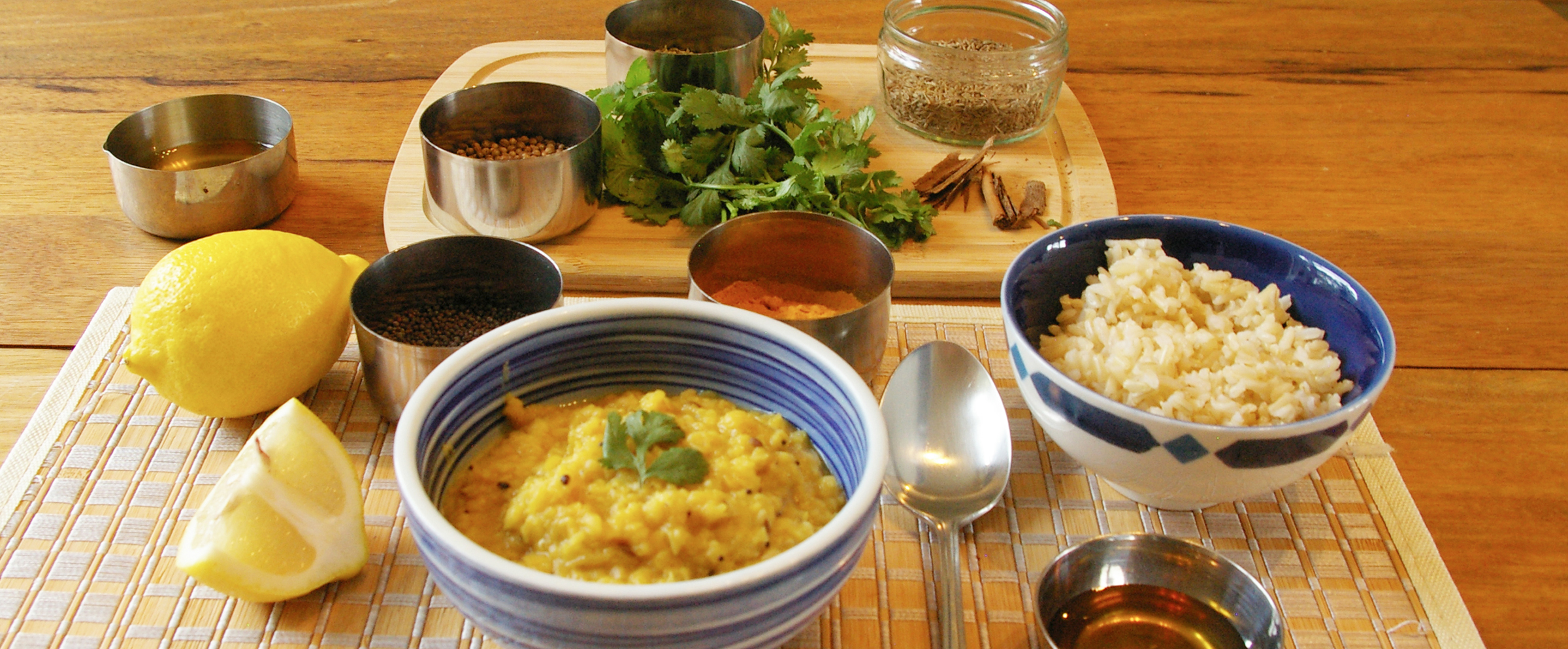Vegetarian Cuisine
Sweet cinnamon dhal
Traditionally, split mung beans are used in dhal dishes, but this recipe uses red lentils, which are more readily available.
Serves 4.

Ingredients:
1 tbsp ghee (clarified butter) or sesame oil
½ tsp black mustard seeds
½ tsp turmeric
½ tsp ground fennel or fennel seeds
½ tsp ground cinnamon
1 tsp ground coriander
275 g (9 ¾ oz) red lentils, soaked in filtered water for 30 minutes
¾ tsp salt
2 tsp lemon juice
1 tsp maple syrup
Brown rice, chapatis and your choice of vegetables.
Preparation:
1. Heat the ghee or sesame oil in a large saucepan and add the black mustard seeds. When they pop, add all the remaining spices and cook for several minutes, stirring continually to release their aromas.
2. Drain the lentils, add to the pan with 750 ml (1 ¼ pints) filtered water, and bring to the boil. Reduce the heat, partially cover, and simmer for 25-30 minutes, stirring occasionally, until the mixture is thick and the lentils are soft.
3. To give a more creamy texture, blend half of the cooked dhal in a blender or food processor, return to the pan and stir well. If the mixture is too thick, add an additional splash of water. Add the salt, lemon juice, and maple syrup to taste and serve with brown rice, chapatis, and vegetables.
No real philosophy can be visualised without self-analysis. – Sri Swami Sivananda
Quick Links
Spiritual Calendar
| OCTOBER 2023 10 Ekadasi 15 New Moon 15 Navaratri begins 24 Dussera (Vijaya Dasami) 25 Ekadasi 29 Full Moon NOVEMBER 2023 Do not bother about spiritual experiences. Go ahead with your Sadhana. Knowledge dawns of its own accord. – Sri Swami Sivananda |
Glossary
JAPA
Japa is the repetition of any Mantra or Name of the Lord. Dhyana is meditation on the form of the Lord with His attributes. This is the difference between Japa and Dhyana. There is meditation or Dhyana with Japa (Japa-Sahita); there is meditation or Dhyana without Japa (Japa-Rahita). In the beginning you should combine Dhyana with Japa. As you advance the Japa drops by itself; meditation only remains. It is an advanced stage. You can then practise concentration separately. You can do whatever you like best in this respect.
Name (Nama) and the object (Rupa) signified by the Name are inseparable. Thought and word are inseparable. Therefore, Japa and Dhyana go together. They are inseparable.
One must take to Japa or Nama-Smarana (remembering the Name of the Lord) very seriously and sincerely with full faith. The chanting of his name is but serving Him. You must have the same flow of love and respect (devotion) in your heart at the time of thinking of or remembering His Name as that you naturally may have in your heart at the time when you really see Him. You should have full faith and belief in the eternity of the Name.
